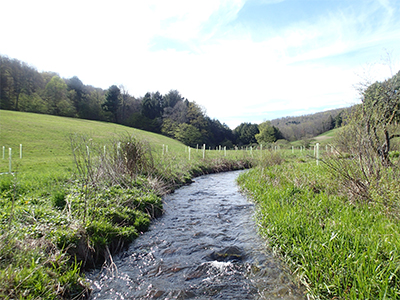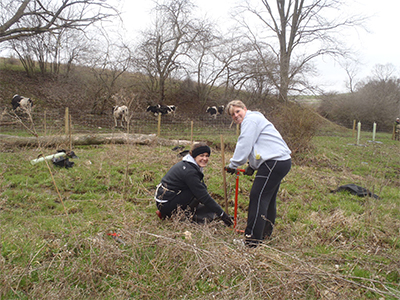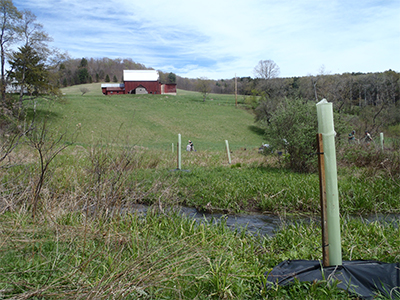Watershed Conservation
Riparian Plantings
From silver maple trees to elderberry bushes, the Conservancy’s watershed conservation staff plants hundreds of riparian trees and shrubs each year to restore waterways and improve water quality. We plant the sensitive areas where bodies of water meet land. These areas are called riparian buffers or riparian zones. Thanks to our members, partners and volunteers, we’ve successfully planted more than 100,000 riparian trees since 2013.



Maintaining healthy vegetative cover along a waterway is one of the most effective ways of limiting non-point source pollution, or sediment and nutrient runoff, from nearby land. Planting and maintaining these forested riparian buffers further helps water quality by creating shade and limiting temperature fluctuations in rivers, streams or creeks.
A variety of trees and shrubs create successful riparian buffers. However, the ability of each species to thrive is dependent on their moisture requirements and tolerances. Planting the right tree or shrub species, in the right locations along a stream, is important to help increase the infiltration capacity of the soils. This allows more water to be absorbed into the ground, thus diminishing flooding occurrences. And when flooding decreases, less pollution enters our waterways.
There are many benefits to forested riparian buffers, including protection from accelerated soil erosion and alleviation of downstream flooding occurrences. When leaves fall into the stream, they provide food for macroinvertebrates (e.g.: snails, crayfish or dragonflies), which will then feed fish. Also, large woody debris provides structured habitat for fish and other organisms living in the stream.
Volunteer to Help with Riparian Plantings
A riparian restoration project involves planting approximately 200 tree and shrub seedlings per acre. All plantings are done by hand and plants can be bare-root, livestakes, and/or small (approximately 1-3 year old) potted trees and shrubs all native to Pennsylvania. Plantings can be done through contracted services or through the coordination of a volunteer activity depending on the size of the site. The labor involved with planting these seedlings ranges from light to heavy duty, and tasks can be found for volunteers from young to old.
For More Information:
Watershed Conservation Program
Western Pennsylvania Conservancy
1067 Philadelphia Street, Suite 101
Indiana, PA 15701
